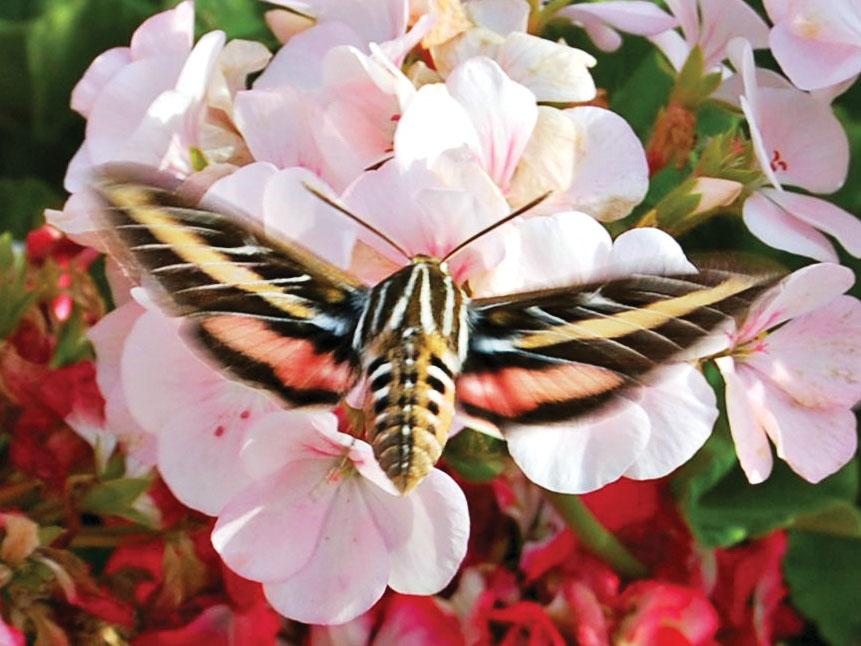It’s a plane! It’s a hummingbird! It’s a moth?
You may have noticed White- Lined Sphinx Moths, pictured above, buzzing around campus.
These moths, commonly known as the “hummingbird” moth for their distinctive flight attributes, are more active during daylight hours, traditionally during the late summer or fall.
According to Phil Pellitteri, UW-Extension Entomologist, this sizeable moth begins its cycle of life as the hornworm. There are commonly two generations per year, however, they are more prevalent in cycles every six to seven years.
The caterpillars are commonly green with solid stripes and consume a diet mainly consisting of weeds. They may also be identified by a characteristic horn, or yellowish spine located on the hind end, though not all species have it.
“Some of the caterpillars have eyespots or dark markings on the insect’s tail end,” Pellitteri said.
Pellitteri also said that the White-Lined moth is one of the larger moths in the hornworm family; all fly in a similar fashion.
Sphinx moths are native to our area and have prevalence throughout the North and Central Americas. Though some species of Sphinx moths may be detrimental to trees or other plants, many, including this particular variety as captured on our campus, are useful in the pollination process.




